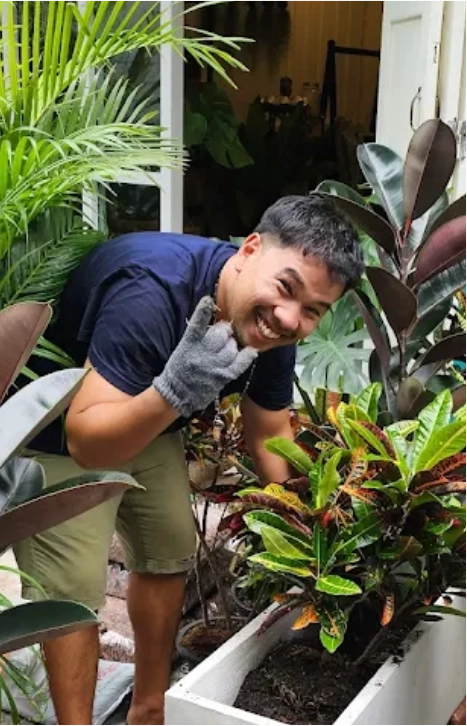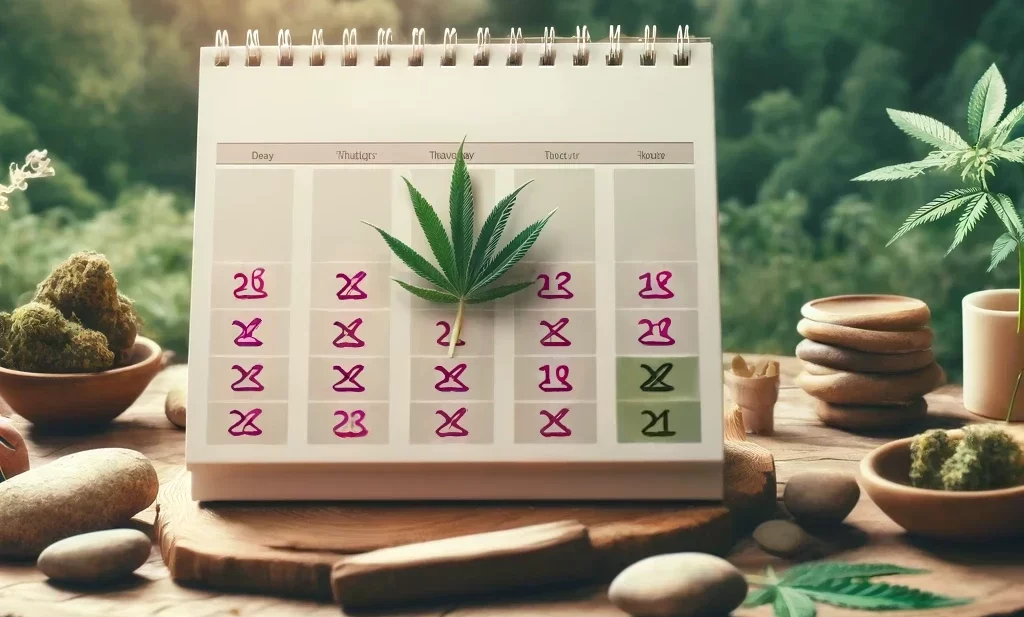How often do you take a break from your cannabis routine? We are all creatures of habit, especially when it comes to experiences that stimulate our bodies in certain ways.
This is precisely what happens when you indulge in cannabis: the body’s endocannabinoid system gets activated as plant-based cannabinoids attach themselves to relevant receptors.
Other bodily systems interacting with the endocannabinoid system also release neurotransmitters and hormones, influencing your body, mind, and psyche.
However, your body will only respond to this stimulus as long as it remains relatively fresh. Continual exposure dulls down the response, similar to what happens with coffee or alcohol: you need to consume more and more each time to reach the same initial effect.
But let’s be honest, it never quite feels the same again, right?
This is particularly true for cannabis. But there’s a simple hack that can bring back the initial high you experienced when you first started using – the cannabis tolerance break!
Cannabis Addiction or Adaptation?
Does not experiencing the initial effect after some time mean you’re addicted?
Not quite… The difference between physical addiction and an adaptation or sensory habituation effect is this: Unlike alcohol, cannabis isn’t addictive – neither is coffee, by the way.
What happens is that the receptors responsible for cannabis become less responsive to cannabinoids and are essentially deactivated.
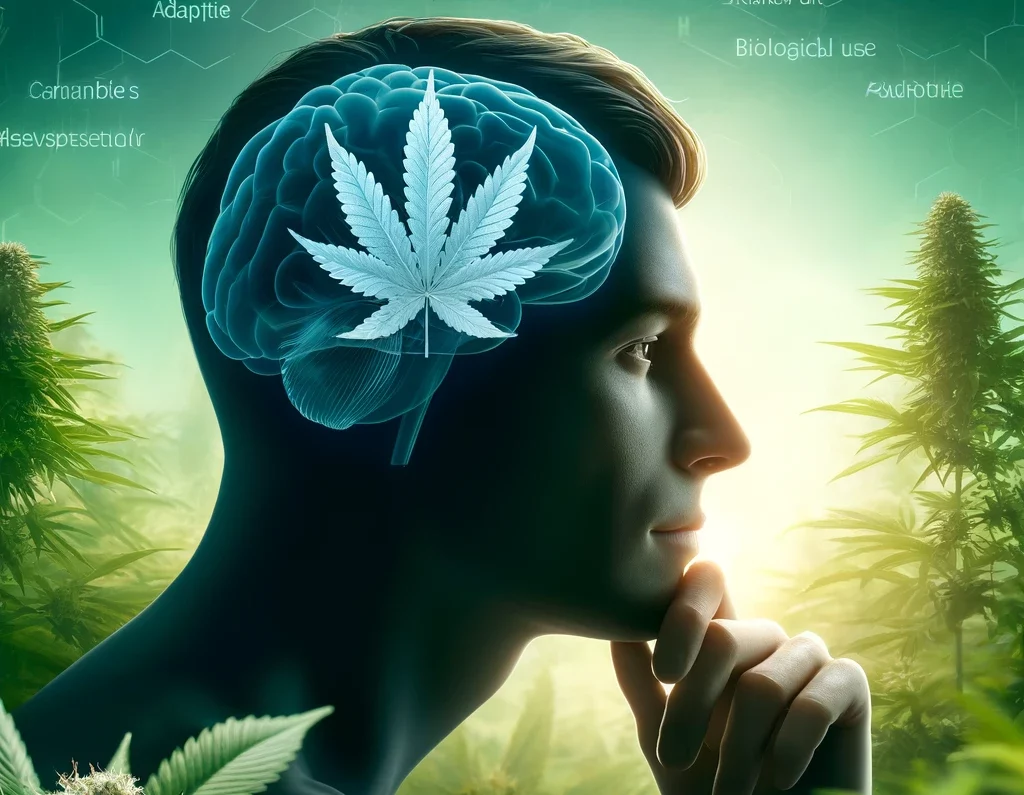
This means fewer receptors are available to bind with cannabinoids to produce that familiar high.
Deepak Cyril D’Souza, a cannabis research expert from Yale School of Medicine, has clearly demonstrated this through his studies. The chain reaction in the endocannabinoid and nervous systems either ceases or significantly reduces.
At this point, it might be a good idea to take a short break from cannabis.
Ever heard of insulin resistance?
A diet rich in carbs leads to increased insulin production. But over time, cells become insulin-resistant and no longer absorb it.
No one would label a Type-2 Diabetic as addicted. But even in this scenario, occasional fasting is considered beneficial as it helps cells regain their sensitivity.
Similarly, a brief interval of abstinence from cannabis can help you experience a more intense high. D’Souza found that CB1 receptors regain their responsiveness after a short period of abstaining and can almost fully recover after a 4-week cannabis break.
Signs You Might Be Overdoing Your Cannabis Intake
Ever noticed any of these three symptoms? You might be developing a tolerance:
- You’re smoking twice as much as you initially did
- Each time you consume, you feel less satisfied than before
- You’re consistently spending more on an increasing amount of cannabis
If you’re consuming more than ever, but the desired effect is eluding you, it’s probably not because your cannabis is of poor quality.
It’s more likely that you’re gradually building up a tolerance to cannabis. This usually happens bit by bit and is initially inconspicuous.
However, at some point, you can’t ignore it anymore: You’re smoking or vaping like a champ, but the outcome keeps being underwhelming. As time goes on, this can become quite costly, so it’s definitely something you should address.
The First Few Days Without Cannabis Can Be Tough
Living without cannabis?
You don’t have to go cold turkey for ages to notice a positive impact. After being abstinent for at least three days, you’ll notice a significant difference.
That’s because when you consume cannabis regularly, THC continues to circulate in your blood for about three days — even if you don’t feel it.
The longer you refrain from using, the longer it takes for your body to rebuild a cannabis tolerance. Ideally, forego consumption completely for one or two weeks or more.
Since THC dissolves in fat and is broken down gradually from your fat cells, this timeline will allow it to diminish in your system. Be aware: During this period, consumption can still be detected even if it’s been a while.
We won’t sugarcoat it – if you’ve been smoking up for years, you’re in for a struggle. During the first few days of your cannabis consumption break, you may experience some undesired side effects.
They typically include the following symptoms, which should subside on their own after a few days:
- Difficulty falling and staying asleep – push through at least five days without cannabis
- Increased dreaming – your dreams might go wild without cannabis – get to know your subconscious
- Mildly depressed mood – confide in your friends about your break, they will support you
- Anxieties and racing thoughts – this cannabis-free phase can be challenging
- Mild irritability – get to know the cranky side of yourself
Using CBD Products: A Helping Hand During Cannabis Withdrawal
CBD items can be a form of rescue for those aiming to kick their cannabis habit. Originating from the very same plant, CBD lacks the “high” inducing properties of its counterpart, THC.
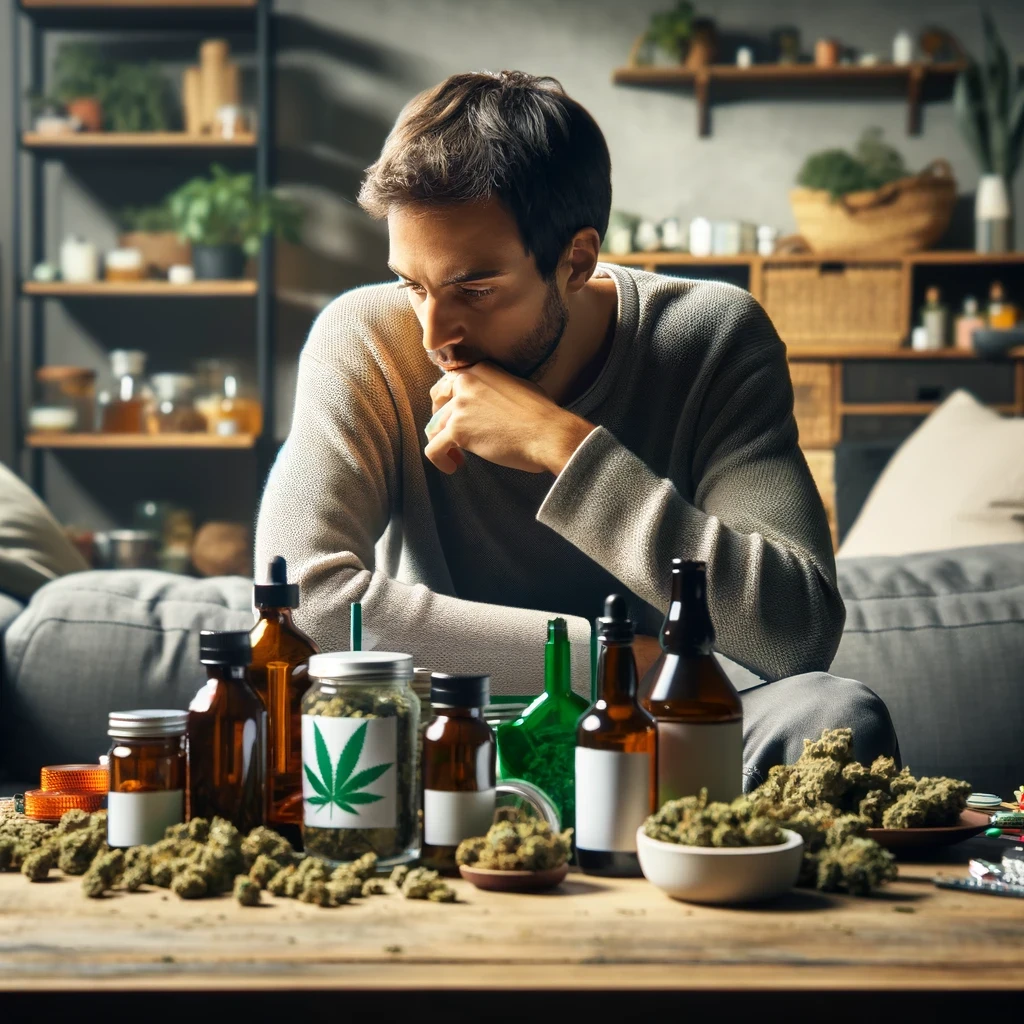
Some users have reported feeling less anxious and achieving better sleep patterns when trying to quit cannabis, thanks to CBD.
However, it’s crucial to engage in a conversation with a healthcare professional before incorporating CBD into your routine to ensure it’s safe.
Surviving the first few days without cannabis: A few handy tips
1. Distraction
You might find thoughts about smoking weed creeping up quite often in the initial phase of quitting. However, with time, these thoughts will occur less frequently.
Engaging in endurance sports can be a great way to distract yourself and boost your happiness hormones. Activities like Nordic walking, jogging, and other similar sports can give you a different kind of high: The infamous runner’s high.
2. Meditation
Through practices like Zen meditation, you learn to stay present in the moment. Every time your mind wanders off towards cannabis, you bring it back. While it sounds simple, it’s not as easy as it seems. But trust us, it works wonders! And remember, practice makes perfect.
3. Stay Hydrated
The more you drink, the sooner your body can flush out any remaining THC. So increasing your daily fluid intake can help shorten your necessary cannabis break.
4. Develop a Strategy for Your Cannabis Break
Think about how you can reward yourself for each day you manage to resist cannabis.
Whether it’s indulging in a bar of dark chocolate (which is packed with the happiness hormone serotonin), a delicious meal, or that long-desired vaporizer you’ve been wishing for. After all, you’ll be saving a lot of money during your cannabis tolerance break, which you can then use to treat yourself.
Sleep issues without cannabis? It’s not permanent
Sleep disturbances and other withdrawal symptoms are quite common during the initial days of quitting.
Try using soothing music and an evening sleep tea made of passionflower, lavender, and lemon balm. Avoid watching TV, working on your computer, or using your phone before bedtime.
This is because too much light exposure can inhibit the production of melatonin, the sleep hormone. If none of these methods work, you could consider giving CBD drops a try. They’re known to promote relaxation and contain less than 0.2% THC.
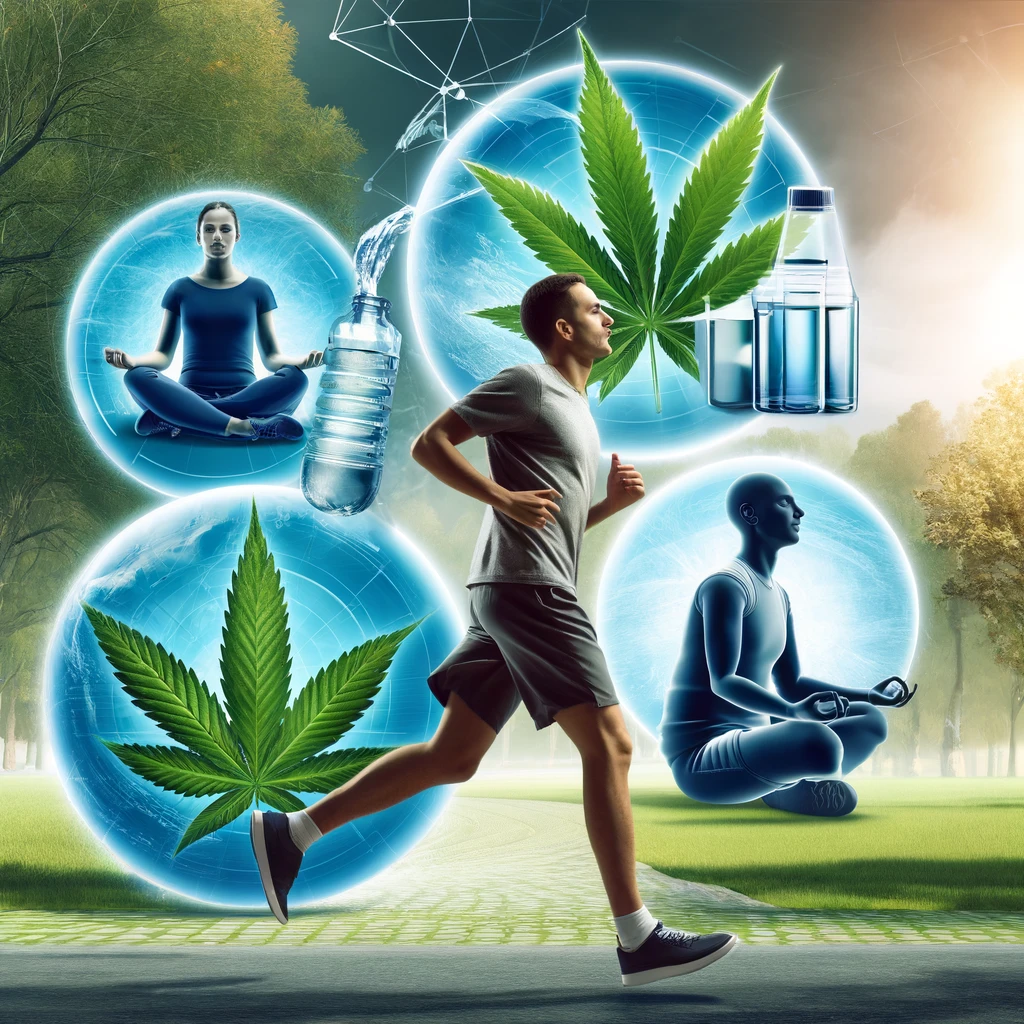
Stay away from mood-boosting medications or synthetic sleeping pills.
They don’t do you any good and many even have addictive potential and unwanted side effects. You can do it without them. Believe in yourself!
How much longer? The duration of the cannabis tolerance break
First things first: The longer you manage to abstain from cannabis, the more effective the results will be. However, try to make it at least 3 days without it.
This will definitely bring you a sense of accomplishment. And who knows?
Maybe this will encourage you to go for 4 days or more next time. A cannabis study has shown that your CB1 receptors return to a normal level within 2 to 4 weeks of stopping consumption.
You managed 2 weeks without cannabis? Congratulations!
Now you can enjoy what you’ve been missing all this time.
Whether you choose to vape or smoke: The next high feels just like the first time. Technically, it is: Your first consumption after a long cannabis tolerance break.
After successfully completing your tolerance break, you should definitely avoid smoking too much and take advantage of the benefits of the new lower dosage.
A cannabis tolerance break, or ‘T-break’, is a deliberate pause from cannabis consumption to reset the body’s response to THC, enhancing its effects when resumed.
The duration can vary, but typically lasts from a few days to several weeks, depending on personal tolerance and consumption patterns. Ideally, a 2 to 4-week break is effective for resetting CB1 receptors.
Yes, CBD can help manage withdrawal symptoms without producing a high, making it a useful aid for those reducing THC intake.
Common symptoms include changes in sleep patterns, mood swings, irritability, and increased dreaming.
Signs include needing to consume more cannabis to achieve the same effects, feeling less satisfied with consumption, and increased spending on cannabis.
Staying hydrated, engaging in physical activities, using CBD products, and practicing meditation are effective ways to manage withdrawal symptoms.
